See the Astonishing Plans for the Very First City on Mars
- Get link
- X
- Other Apps
A one-way ticket (including a cliffside condo!) starts at $300,000.
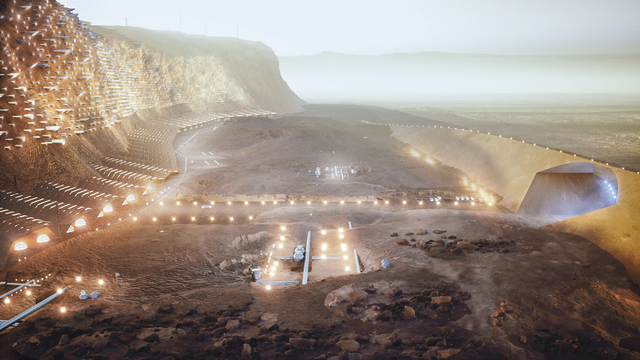
- Architects and scientists have collaborated on a new Mars city concept.
- Up to 250,000 residents will live inside a cliff, connected by elevators.
- The Mars city relies on a stream of supplies from Earth before becoming fully sustainable.
An architecture firm has released ambitious plans for Nüwa, a sustainable city on Mars that could hold up to 250,000 people in mostly underground cave systems.
➡ You think space is badass. So do we. Let’s nerd out over it together.
Nüwa, named for the Chinese mythological goddess who melted five stones to give robust societal pillars, would be housed inside a sheer rock face where residents would be protected from damaging cosmic and solar radiation.
If you decide to move to Mars, your $300,000 ticket will include a one-way trip to Nüwa, a residential unit of 25 to 35 square meters, full access to facilities, life support services and food, and “a binding work contract to devote between 60 [percent] and 80 [percent] of [your] work time to tasks assigned by the city,” according to ABIBOO, the architecture studio behind the concept.
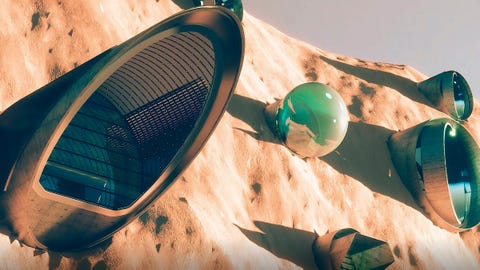
What will it take for people to safely live on Mars? ABIBOO has nailed the biggest requirement by planning for ways to shelter residents from radiation. (We’ll need some similar protective deus ex machina for people to get all the way to Mars without being irradiated, but that’s for some other group to solve.) And the residents will need to be able to produce food crops in order to sustain—it’s simply too complicated and risky to plan to bring all required food all the way from Earth.
To solve both problems, ABIBOO worked with SONet network—an international team of scientists led by astrophysicist Guillem Anglada, who discovered the exoplanet Proxima-B—and carved Nüwa out of a Martian cliff called Tempe Mensa. The cliff is part of Mars’s Tharsis region. By choosing this particular location, the group envisions both protecting residents from radiation and exposing them to direct light to grow crops.
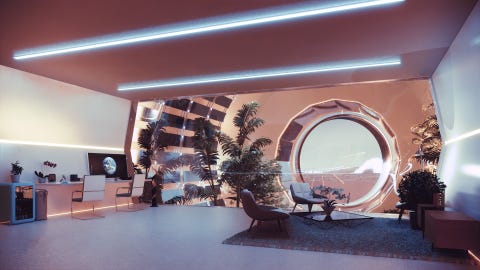
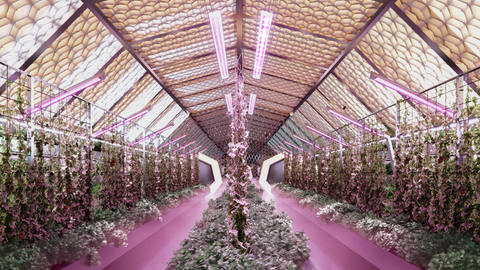
People will live in cliffside terraces and only visit the more exposed surface when necessary. They’ll travel by train and bus outside the cliffside and by huge elevator systems inside the cliffside. More from ABIBOO:
At the foot of the cliff, large pavilions have been located for social interaction in the Valley. These pavilions have been designed with translucent skin to offer views of the landscapes of Mars. These domes are protected from external radiation by large overflying canopies. The material from the cliff’s excavation is dumped on top of such roofs, protecting from radiation. At the same time, this strategy ensures recyclability even at a large-scale. In the Valley, there are also specific structures to house hospitals, schools and universities, sports and cultural activities, shopping areas, and train stations that communicate with the space shuttle.
ABIBOO says it imagines the city only requiring supplies from Earth for a limited time before the city becomes sustainable. With designs like this one, it’s worth thinking about the margin for error associated with different features. What if 250,000 people populate the city, but half are temporarily disabled by an illness that rides along from Earth? There’s an equilibrium point where everyone must do their part to ensure that all citizens get to eat, for example.

The plans for Nüwa include crop plants as well as farm animals. Residents can socialize in shared areas separate from the terraced housing. The design is familiar for people who already live in mountainous places, where terraces and elevation are nothing new. But usually, people want to live in the flatter place while making the mountainous terrain into terraces for farming. (If you’re not sure why, think about the challenges of moving from one home to another when the home is the side of a cliff.)
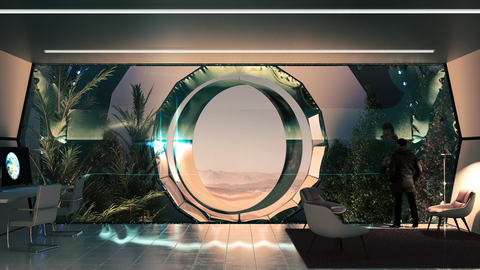
While Elon Musk has said he plans to have a city on Mars by 2050, an ABIBOO spokesperson told Popular Mechanics there isn’t yet an exact year to start building Nüwa, despite false reports of construction beginning in 2054.
Most plans for habitation on Mars have opted for residents to occupy underground caves. Putting people into the side of a cliff is novel, but it’s a great way to combine the benefits of underground shelter without the downsides of becoming a mole person.
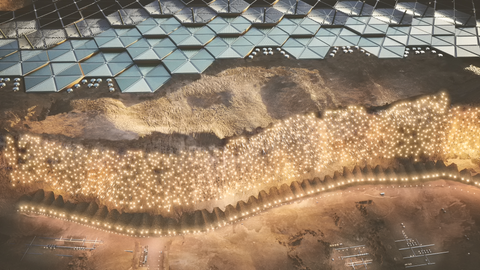
As with Musk’s discussion of a Mars settlement, everything about Nüwa looks and sounds great, but the X-factor of “sustainability” is still a huge question mark. ABIBOO writes:
“After an initial short period of capital investment and supply from Earth, this urban development on Mars maintains and grows by its means and sustainable manner. All the materials required for constructing the city are obtained on Mars by processing Carbon and other minerals.”
ABIBOO residents will have access to a shuttle to and from Earth every 26 months, with launch windows lasting between 1 and 3 months. But even if people urgently needed medicine or other supplies from Earth, the wait will be at the very least a number of months. This will be the farthest travel time that humans have lived from each other since the earliest days of sea travel thousands of years ago.
🔭 The Best Telescopes for Stargazing

This telescope features a 70mm aperture and comes with fully coated optimal lenses to offer a crisp, clear view of the night's sky. Tech-savvy stargazers will appreciate the smart phone adapter and wireless camera remote, making it possible to view constellations from your screen.

All you need to do is point the tube in the direction of the desired object and take a gander. With two high-quality eyepieces (70mm and 360mm) that provide low- and high-power views of celestial objects, you'll be able to satisfy your stargazing wishes with ease.

This option features a wide, 70-millimeter aperture that will make stars and constellations appear bright and clear. It also has a smartphone adapter so you can view everything directly from your screen.






Comments
Post a Comment